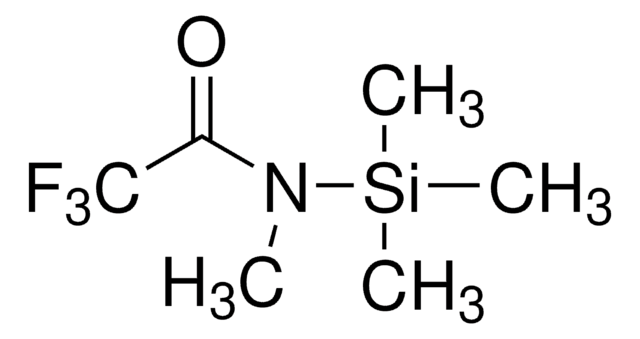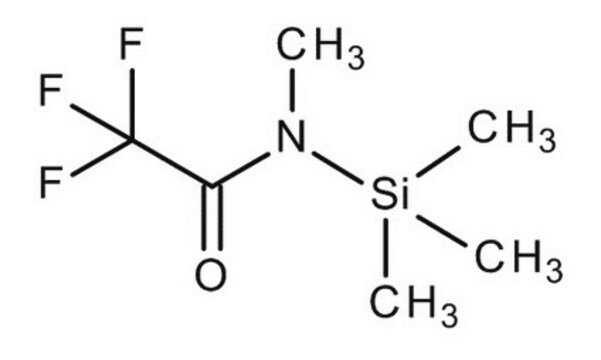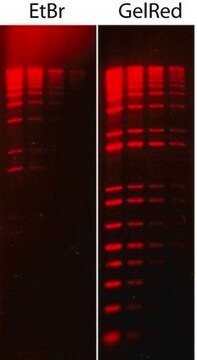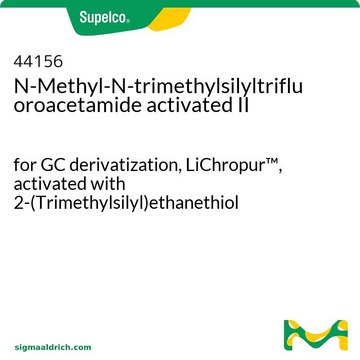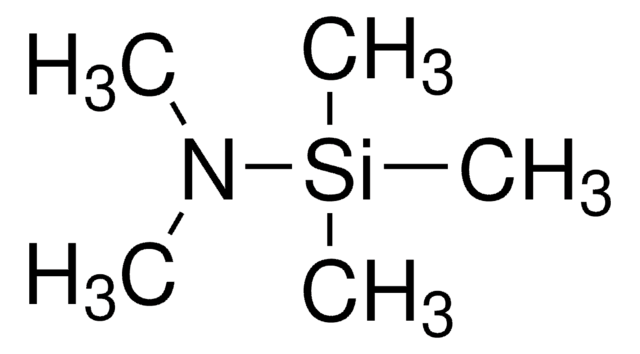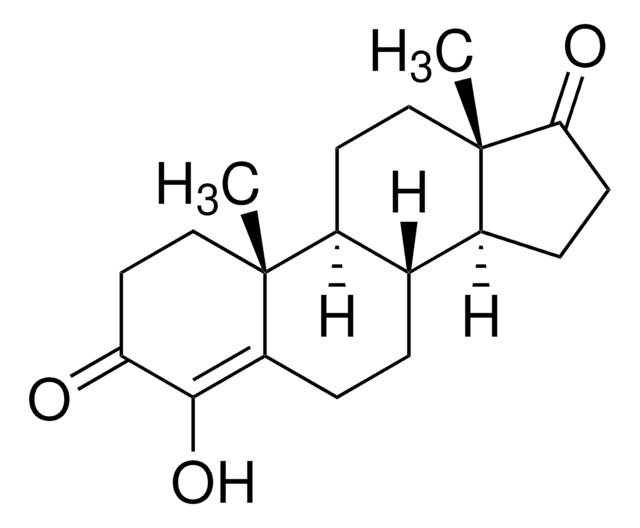M7891
N-Methyl-N-(trimethylsilyl)trifluoroacetamide
BioReagent, for silylations, LiChropur™
Synonym(s):
N-Trimethylsilyl-N-methyl trifluoroacetamide, MSTFA
About This Item
Recommended Products
vapor density
>1 (vs air)
Quality Level
vapor pressure
8.8 mmHg ( 27 °C)
product line
BioReagent
form
liquid
quality
for silylations, LiChropur™
reaction suitability
reaction type: Silylations
reagent type: derivatization reagent
technique(s)
gas chromatography (GC): suitable
refractive index
n20/D 1.38 (lit.)
bp
130-132 °C (lit.)
solubility
chloroform: soluble 0.1 mg/mL
density
1.07 g/mL at 25 °C (lit.)
1.075 g/mL at 25 °C (lit.)
storage temp.
2-8°C
SMILES string
CN(C(=O)C(F)(F)F)[Si](C)(C)C
InChI
1S/C6H12F3NOSi/c1-10(12(2,3)4)5(11)6(7,8)9/h1-4H3
InChI key
MSPCIZMDDUQPGJ-UHFFFAOYSA-N
Looking for similar products? Visit Product Comparison Guide
General description
Application
- In the derivatization step of the metabolomics analysis using gas chromatography/mass spectrometry (GC/MS).
- Derivatization reagent in gas chromatography with flame ionization detection (GC-FID) analysis.
Packaging
Legal Information
Not finding the right product?
Try our Product Selector Tool.
related product
Signal Word
Warning
Hazard Statements
Precautionary Statements
Hazard Classifications
Eye Irrit. 2 - Flam. Liq. 3 - Skin Irrit. 2 - STOT SE 3
Target Organs
Respiratory system
Storage Class Code
3 - Flammable liquids
WGK
WGK 3
Flash Point(F)
77.0 °F - closed cup
Flash Point(C)
25 °C - closed cup
Personal Protective Equipment
Certificates of Analysis (COA)
Search for Certificates of Analysis (COA) by entering the products Lot/Batch Number. Lot and Batch Numbers can be found on a product’s label following the words ‘Lot’ or ‘Batch’.
Already Own This Product?
Find documentation for the products that you have recently purchased in the Document Library.
Customers Also Viewed
Our team of scientists has experience in all areas of research including Life Science, Material Science, Chemical Synthesis, Chromatography, Analytical and many others.
Contact Technical Service